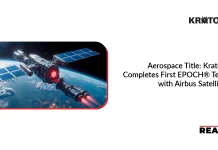Southwest Research Institute will collaborate with University of Michigan (UM) to use additive manufacturing and machine learning to create an advanced burner that will eliminate 99.5% of the methane encountered during oil production. Burners currently used on the field commonly perform below target specifications, especially under crosswind conditions, which results in a significant portion of this powerful greenhouse gas escaping into the atmosphere.
Also Read: Sungrow’s New Residential Inverter SG6.0RS Wins Contemporary Good Design Award
The three-year, $2.9 million project is funded by the U.S. Department of Energy’s Advanced Research Projects Agency–Energy (ARPA-E) Reducing Emissions of Methane Every Day of the Year (REMEDY) program. It is one of several projects funded in support of the U.S. Methane Emissions Reduction Action Plan, announced at the 2021 United Nations Climate Change Conference (COP26). The plan seeks to reduce methane emissions and promote American innovation and manufacturing of new technologies to achieve climate goals.
During oil production, producers encountering pockets of methane typically use flare stacks to burn off the vented gas. However, winds blowing across conventional open flame burners often result in 40% or more of the methane escaping into the air. Methane’s global warming effect is significantly greater than that of carbon dioxide on a per-unit basis, so flaring reduces overall global warming potential.
“In collaboration with UM, we will use machine learning, computational fluid dynamics and additive manufacturing to create a burner capable of achieving high methane destruction efficiency and combustion stability at the challenging conditions present on the field,” said SwRI Research Engineer Luis Gutierrez, one of the project’s leaders. “This will be a vast improvement over today’s conventional flare technology.”
Gutierrez is working with Prof. Margaret Wooldridge, an Arthur F. Thurnau Professor of Mechanical Engineering at UM and leader of the Wooldridge Combustion Laboratory. Wooldridge has extensive expertise on using advanced engineering methods to reduce emissions from combustion, like using machine learning tools to optimize combustion systems.
“The efficacy of a flare burner to destroy methane is mainly determined by the combined characteristics of the air and natural gas. This is affected by the conditions of the field, which cannot be controlled, but also by the geometric characteristics of the burner,” Gutierrez said. “Additive manufacturing has opened the door to experiment with novel and complex burner geometries that can enhance the efficiency and robustness of the combustion process in gas flares. In this project we will use computational fluid dynamics, machine learning, and multi-scale testing to explore less conventional solutions. Ultimately, by optimizing the fluid dynamics and gas mixing with a novel burner design, we aim to achieve lower methane emissions.”
The project will take advantage of SwRI Metering Research Facility (MRF), a world-class, high-technology flow measurement testbed, with the most accurate, controllable and flexible research capabilities in the industry. The MRF will provide realistic conditions to test the effectiveness of the burner’s geometry. Additionally, the burners will be fabricated in SwRI Metal Additive Manufacturing facilities.




